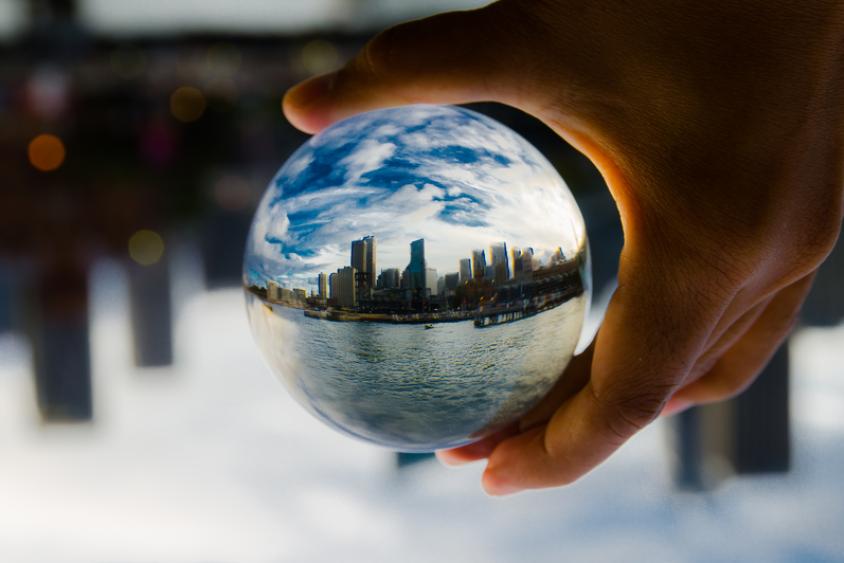Five ways cities will change in the decade after COVID

Ricardo Alvarez, postdoctoral fellow in the Department of Urban Studies and Planning and a researcher in the SENSEable City Lab, both at the Massachusetts Institute of Technology (MIT). Ricardo is also lead instructor of the MIT Professional Education course, Designing Tomorrow’s Cities.
Urban planners must factor in emerging technologies and the legacy of COVID-19 when imagining the cities of the future.
In my Digital Cities Design Workshop at MIT, I urge my students to think a decade ahead. Cities face many hard, structural challenges, and the ten-year horizon allows students to consider technologies and trends that either already exist today or are actively being researched, giving them the ability to work within the bounds of not only what is possible, but what is practical.

This next decade is likely to be one to remember. While urban areas are constantly changing, every so often a tectonic shift occurs that creates an undeniable line of demarcation in the evolution of cities. One of the clearest shifts took place more than a century ago, with the emergence of the automobile, which redefined the form of modern cities worldwide. I believe we’re on the cusp of another such change now – in part due to the coronavirus crisis, which has forced us to redefine the relationship between human activity and space, but also because of a number of game-changing technologies that are all poised to mature at the same time.
Here are five trends and technologies that urban planners should watch out for, over the coming decade:
1. IoT in cities to go mainstream
Now that forward-thinking cities have deployed a number of Internet of Things technologies, such as smart lighting and smart parking systems, these applications are likely to become commonplace at a rapid pace. Prices for sensors and systems are coming down, and leaders in smaller cities are less afraid of risking failure after seeing these applications validated by other municipalities. Smart lighting, in particular, is sometimes called a “gateway drug” that leads to other investments.
When civic leaders see the opportunity to not only cut their lighting bills, but also improve public safety and lay the foundation for a network of sensors, they are increasingly going to take it.
2. The Global South embraces digital infrastructure
When we discuss smart cities, the conversation is often limited to the Londons, Amsterdams and Tokyos of the world. But the truth is that there are far more cities around the globe that resemble Medellin, Colombia than those that resemble Sydney, Australia.
Many of these cities in the “Global South” – located in developing countries in Africa, Asia, and Latin America – lack adequate physical infrastructure, and people sometimes think it is impractical to discuss digital investments in places where roads and bridges are crumbling. But it is often less expensive to install a telecommunications tower that will connect and provide services to tens of thousands of people than it is to build a mile of road in these locales.
Expect to see profound effects of digital transformation all around the world over the next decade – and not just in places that look like MIT’s home city of Cambridge, Massachusetts.
3. AI and facial recognition bring opportunities and challenges
AI-enabled systems, that is systems where a machine automatically processes data and generates a decision, often without human involvement will become prevalent in future cities.
Some applications, such as intelligent temperature monitoring of buildings or smart energy management are both beneficial and fairly harmless, but others, such as facial recognition come with real concerns about privacy and the potential for abuse.
So far, perception of the technology varies widely by culture and geography. For instance, many people I’ve spoken with in places like China are unbothered by facial recognition, reasoning that they have nothing to hide if they’ve done nothing wrong and that the uses of the technology easily outweigh any potential harm. In my native country of Mexico, people often prefer more intelligent cameras in public spaces as a way to increase public safety, while imposing layers of control outside the hands of a police system with a long history of corruption. Meanwhile, people in Europe, Canada, and the US are largely wary of facial recognition and find it dangerously intrusive.
In any event, we already live in a world filled with cameras, and facial recognition merely requires the addition of a software layer to analyse video data – much of which is in private hands – so cities will need to seriously grapple with the potential privacy ramifications as they seek to balance AI’s benefits and drawbacks.


